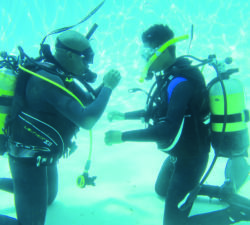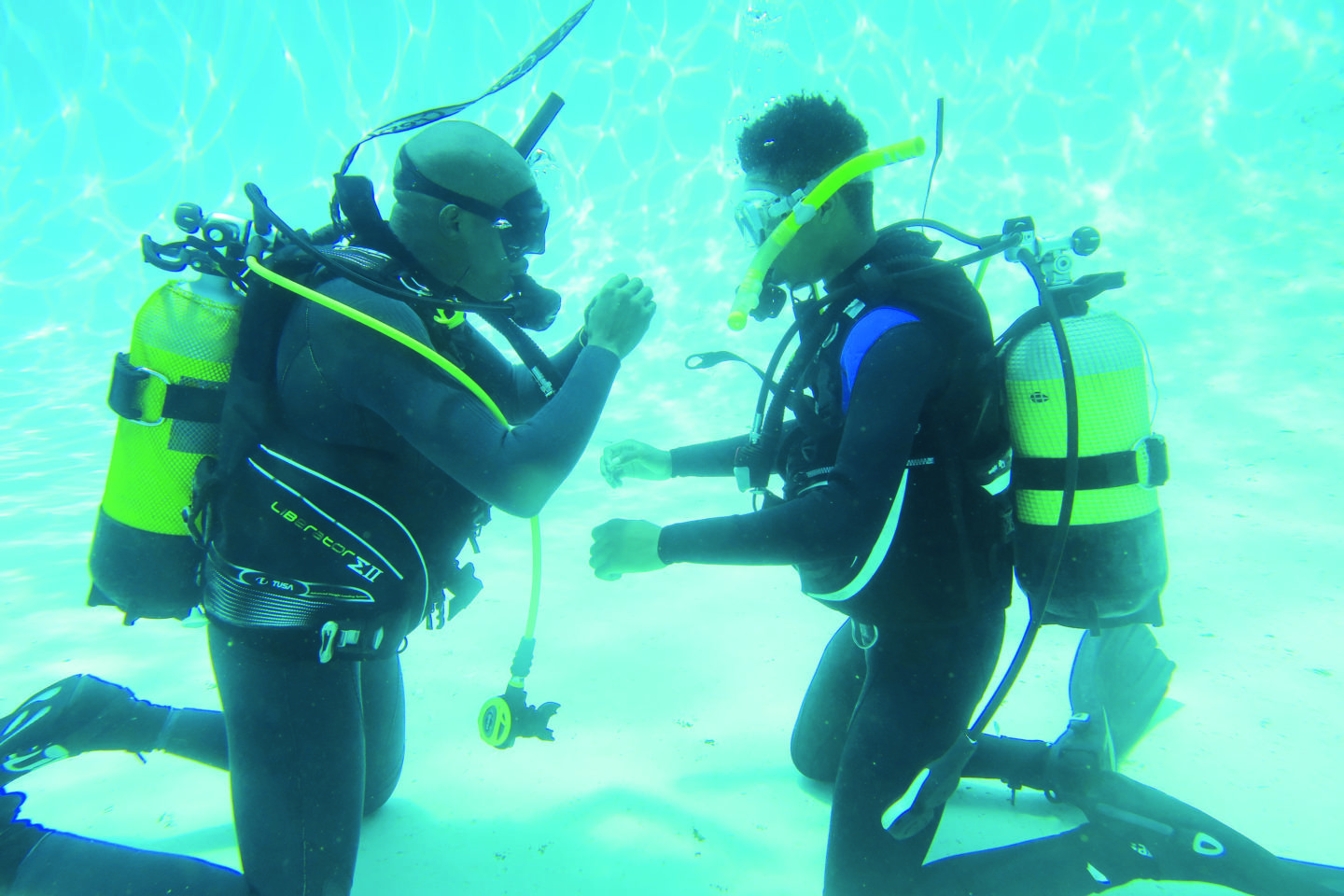Kholisile Khumalo wants young black South Africans to reach their full potential by conquering their fear of water. His scuba diving academy worked hard to stay afloat in the pandemic, but he is facing the future with confidence.
I admit setting up a scuba diving academy in a country where fewer than one in seven of the target population can even swim is a tall order.
But the sea, and underwater life especially, have fascinated me since childhood. I was devastated when my parents in Bloemfontein, miles from the ocean, couldn’t afford the R300 ($20) for a school trip to the coast. Years later, I had my first experience underwater at a conference in Mauritius. As part of the social activities, delegates could participate in an underwater sea walk. Although it didn’t involve scuba diving, the experience blew me away. It was my eureka moment.
I certainly would not have predicted that this would be the trigger for a journey that would see me creating and running a scuba…


